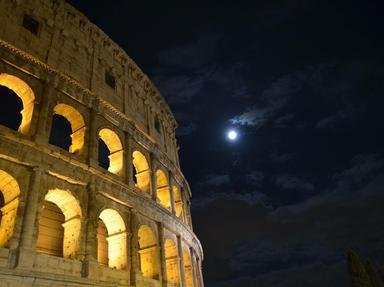Quiz Answer Key and Fun Facts
1. Rome is commonly thought to have been founded in what year?
2. Who was the second King of Rome?
3. In what year did Julius Caesar cross the Rubicon?
4. Julius Caesar was the first Emperor of Rome?
5. What was Emperor Caligula said to have done during the Magnum Incedium Romae (Great Fire of Rome) in 64 C.E.?
6. Who changed the religious face of the Empire with his Edict of Milan in 313 C.E.?
7. Who was the last Emperor of the Western Roman Empire?
8. On how many hills is Rome built?
9. What structure, developed by Romans, revolutionized the way that society lived by bringing running water into cities?
10. The Romans invented paved roads?
Source: Author
ginoo9
This quiz was reviewed by FunTrivia editor
bloomsby before going online.
Any errors found in FunTrivia content are routinely corrected through our feedback system.


